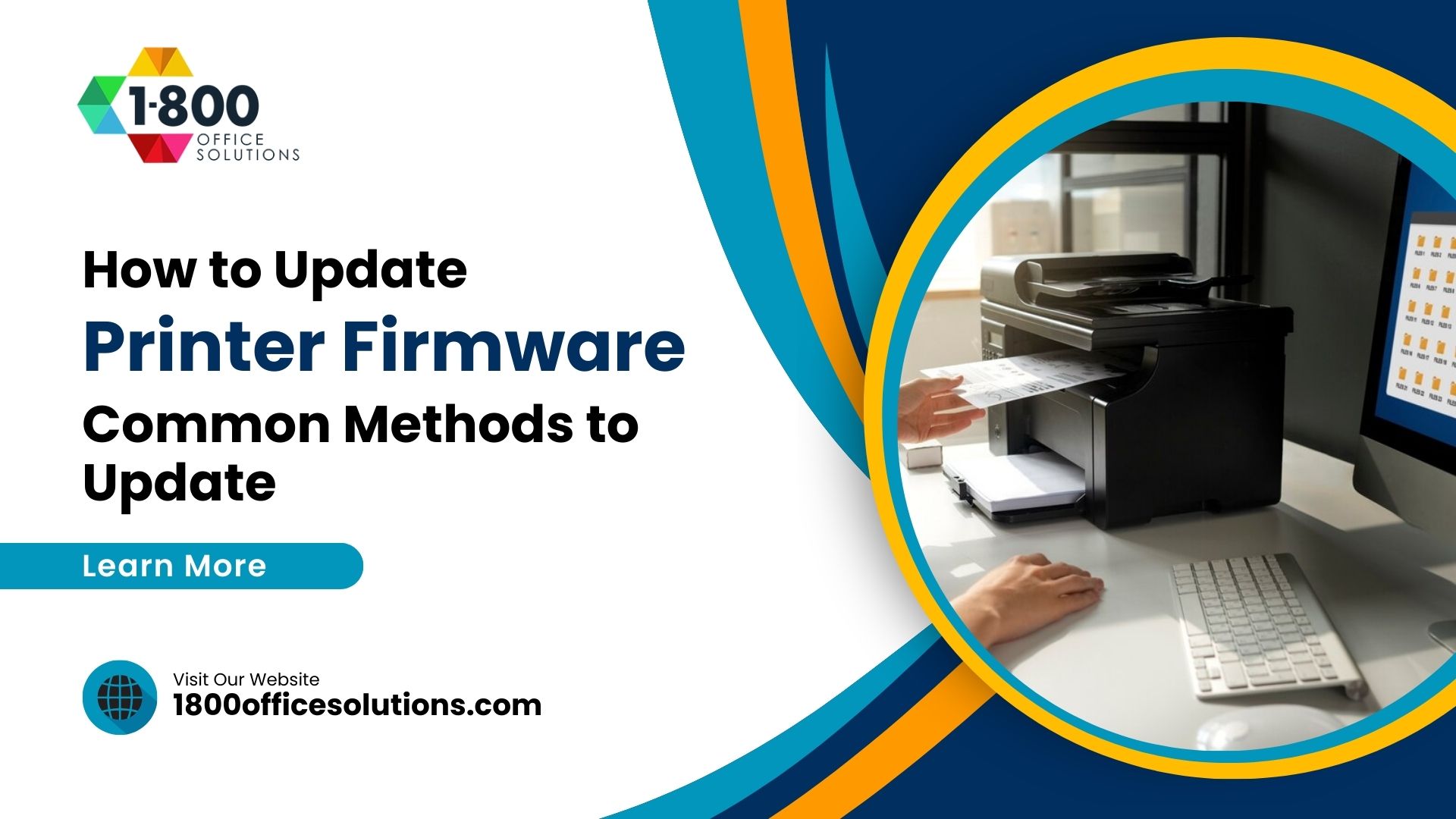Printer Ink Innovations: Exploring cost-effective and quality options
Introduction to Printer Ink Innovations
The world of printer ink innovations is a dynamic and ever-evolving landscape that has revolutionized the way we approach printing. From the early days of simple ink formulations to the latest advancements in ink technology, the industry has witnessed a remarkable transformation. The innovation in ink has not only enhanced the quality of printing but also enabled new possibilities in various applications.
Selecting the right ink technology is not just a matter of preference; it’s a critical decision that can significantly impact the final product. The importance of this selection process cannot be overstated, as it determines factors such as color vibrancy, durability, and compatibility with different substrates. Whether it’s water-based inks for eco-friendly printing or specialized formulations for specific substrates, the choice of ink plays a vital role in achieving the desired results. For businesses looking to optimize production efficiency, this guide to cheap printing offers valuable insights into cost-effective solutions.
Various printing ink technologies have emerged over the years, each with its unique characteristics and applications. Here’s a brief overview of some of the prominent ones:
- Offset Printing Ink: Utilizing oil-based formulations, offset printing ink works on the principle of oil and water repulsion. It’s well-suited for printing on paper, cardboard, and certain non-absorbent materials, enabling sharp details and vibrant colors. This technology is often used in large-scale projects like brochures and magazines.
- Flexographic Printing Ink: Available in both water-based and solvent-based formulations, flexographic ink is commonly used for packaging materials and labels. It offers fast drying times and good color vibrancy, making it a cost-effective option for large print runs.
- Digital Printing Ink: Digital printing has brought about a significant shift in the printing industry, offering flexibility and customization. The inks can be divided into aqueous-based and solvent-based, each catering to different needs. Aqueous inks are eco-friendly and suitable for various paper stocks, while solvent inks are used in large-format printers for outdoor signage.
- UV Printing Ink: Utilizing ultraviolet (UV) curable inks, UV printing provides instant drying and excellent adhesion to various substrates, including plastics and metal. It’s ideal for personalized products and promotional items.
- Dye Sublimation Ink: Popular for textile printing and sportswear, dye sublimation inks are heat-activated and bond with polyester fibers. This process allows for brilliant colors and smooth gradients.
These technologies represent the forefront of ink innovation in the printing industry. They have not only expanded the capabilities of printers but also empowered businesses to explore innovative ways of marketing and product development. The continuous evolution of ink and printing technologies will undoubtedly continue to press forward, shaping the future of the industry.
Exploring Different Printing Ink Innovations
1. Offset Printing Ink
Definition and Application: Offset printing ink is a widely recognized technology in the printing industry. It’s an oil-based ink system that works on the principle of oil and water repulsion. The technology is designed to provide sharp details and vibrant colors, primarily used in commercial printing. It’s suitable for printing on various substrates, including paper, cardboard, and certain non-absorbent materials. Offset printing is often adopted by manufacturers for large-scale projects like brochures, magazines, and packaging materials.
Benefits:
- Sharp Details: Offset printing ink is formulated to enhance the clarity and precision of printed images. The ink’s viscosity allows it to adhere to the printing plate without spreading, ensuring that fine lines and text are reproduced with exceptional sharpness.
- Vibrant Colors: The ink technology enables a wide color gamut, producing vibrant and true-to-life colors. The ink set is carefully formulated to optimize color reproduction, meeting customers’ specific requirements.
- Consistent Results: Offset printing offers consistent results across large print runs. The technology continues to advance, and manufacturers prioritize continuous improvement to ensure uniformity and quality. The use of a squeegee in the printing process helps in maintaining ink consistency across the press.
Offset printing ink represents a significant aspect of ink innovations, contributing to the growing demand for high-quality printing solutions. It aligns with the business model of various industries looking to elevate their branding and marketing materials.
2. Flexographic Printing Ink
Definition and Application: Flexographic printing ink innovation is a prominent technology in the printing industry, particularly known for its versatility and cost-effectiveness. It’s available in both water-based and solvent-based formulations, suitable for printing on a wide range of substrates, including paper, plastics, and films. Flexographic printing is commonly employed for packaging materials, labels, and corrugated cardboard printing.
Benefits:
- Fast Drying: Flexographic inks are formulated to dry quickly, reducing production times and enhancing efficiency on the production floor. The fast drying times are achieved through the careful formulation of the ink, considering factors like viscosity and chemical composition.
- High Print Speeds: This ink technology enables high print speeds, catering to the needs of end users who require large print runs. The ink system is designed to provide smooth flow and consistent application, allowing for uninterrupted printing.
- Cost-Effective: Flexographic printing ink offers a cost-effective solution for large print runs. The technology is optimized to minimize waste and enhance sustainability, contributing to a sustainable future for the printing industry.
Flexographic printing ink aligns with the growing emphasis on sustainability and environmentally friendly practices. The adoption of water-based pigment ink options reflects the industry’s commitment to reducing environmental impact.
3. Digital Printing Ink
Aqueous-Based Inks: Aqueous-based inks are a part of the digital printing revolution. These inks are water-based and commonly used in desktop inkjet printers and commercial digital presses. They are designed to provide vibrant colors and good image durability. Aqueous inks are suitable for various paper stocks, including coated and uncoated papers, and are a popular choice for personalized products, brochures, and flyers.
Solvent-Based Inks: Solvent-based inks are another category within digital printing ink technology. These inks are oil-based and contain volatile organic compounds (VOCs). They are primarily used in large-format printers for outdoor signage, banners, and vehicle wraps. Solvent inks offer excellent durability, water resistance, and UV resistance but require proper ventilation due to the emission of VOCs during printing.
Benefits:
- Flexibility: Digital printing ink offers flexibility in printing directly on various substrates and applications. The technology allows for customization and small to medium print runs, catering to specific customer needs.
- Customization: The digital inkjet printing process enables personalized printing, allowing businesses to tailor their marketing materials to target specific audiences. This level of customization has significantly improved the way businesses engage with their customers.
- Eco-Friendly Options: With the growing emphasis on sustainability, digital printing offers eco-friendly ink options, including water-based pigment ink. These inks contribute to the recyclability of printed materials and align with the industry’s commitment to a sustainable future.
Digital printing ink, including inkjet inks, represents a significant advancement in the printing industry. The technology continues to advance, offering solutions that prioritize environmental considerations and customer-specific requirements. The versatility of digital printing ink supports various industries, from automotive to textile, enhancing their marketing and production capabilities.
4. UV Printing Ink
Definition and Application: UV printing ink is a versatile and high-quality printing method that uses ultraviolet (UV) curable inks. The ink is exposed to ultraviolet light, causing it to dry instantly, resulting in vibrant colors and excellent adhesion to various substrates, including plastics, glass, metal, wood, and more. UV printing is suitable for both rigid and flexible materials and offers exceptional print quality, scratch resistance, and longevity.
Benefits:
- Vibrant Colors: UV printing ink is formulated to produce vibrant colors that are resistant to fading and abrasion. The ink’s chemical composition ensures that the colors remain bright and true, even when exposed to harsh environmental conditions.
- Scratch Resistance: The instant drying process of UV-curable ink creates a strong bond with the substrate, providing scratch resistance. This quality makes UV printing ideal for products that require durability, such as outdoor signage and industrial applications.
- Longevity: UV printing ink is designed to provide long-lasting prints. The technology ensures that the prints remain intact and vibrant for extended periods, making it suitable for applications that prioritize longevity.
UV printing ink aligns with the industry’s focus on sustainability and reducing environmental impact. The technology offers solutions that are both environmentally friendly and cost-effective, meeting the needs of various industries.
5. Dye Sublimation Ink
Definition and Application: Dye sublimation ink is a specialized technology used for producing vibrant and long-lasting prints on fabrics and rigid substrates with a polyester coating. The ink is heat-activated, converting from a solid to a gas state and bonding with the polyester fibers. This process allows for brilliant colors, smooth gradients, and photo-quality prints. Dye sublimation printing is popular for textile printing, sportswear, promotional products, and personalized gifts.
Benefits:
- Brilliant Colors: Dye sublimation ink is formulated to produce brilliant colors that penetrate the fabric or substrate. The ink’s unique formulation ensures that the colors are vibrant and long-lasting, enhancing the visual appeal of the printed products.
- Smooth Gradients: The technology allows for smooth gradients and transitions between colors, creating photo-quality prints. The ink set is carefully formulated to optimize color blending, providing a natural and aesthetically pleasing appearance.
- Popular for Textile Printing: Dye sublimation ink has found widespread adoption in the textile industry. The ink’s compatibility with polyester and other fabrics has made it a preferred choice for fashion, sportswear, and home décor.
Dye sublimation ink represents a significant innovation in the printing industry, offering solutions that prioritize quality, sustainability, and versatility. The technology continues to see advancements, with manufacturers and suppliers focusing on continuous improvement and the development of new products that meet the evolving needs of the market.
Exploring different printing ink technologies provides a comprehensive understanding of the advancements and innovations shaping the printing industry. From traditional methods like offset and flexographic printing to modern digital and UV printing, each technology offers unique benefits and applications.
Wide-Format Printers Ink Innovations and Business Growth
Wide-format printers have become a cornerstone in the printing industry, offering a multitude of benefits that contribute to business growth and success. These printers are designed to provide large-scale printing solutions, accommodating various substrates and applications. The adoption of wide-format printers has significantly improved the way businesses approach printing, aligning with the growing demand for versatility, quality, and efficiency. Here’s a detailed exploration of the key benefits:
Versatility in Printing Options
Wide-format printers offer unparalleled versatility in printing options. They are capable of printing directly on a wide range of materials, including paper, plastic, fabric, metal, and more. This versatility extends to various industries, from automotive to textile, allowing businesses to explore innovative printing solutions. The use of UV-curable ink and water-based pigment ink further enhances the flexibility of wide-format printers, catering to specific industry needs and sustainability considerations.
Increased Efficiency and Productivity
The efficiency and productivity of wide-format printers are among their standout features. These printers are designed to provide high-speed printing without compromising on quality. The ink system, printheads, and printing process are optimized to reduce production times and enhance workflow on the production floor. The adoption of inkjet printing technology, including digital inkjet printing, contributes to this efficiency, allowing businesses to meet tight deadlines and cater to the needs of end users.
Quality Impressions and Brand Perception
Wide-format printers are synonymous with quality impressions. The use of advanced ink technology, including pigment inks and inkjet inks, ensures sharp details, vibrant colors, and consistent results. This quality extends to brand perception, as businesses prioritize high-quality printing to elevate their brand image and engage with customers. The printing industry continues to advance, with manufacturers and suppliers focusing on continuous improvement and the development of new products that enhance print quality. The ability to produce quality impressions aligns with the business model of various industries, reflecting professionalism and commitment to excellence.
Tailored Marketing Campaigns
Wide-format printers enable businesses to create tailored marketing campaigns that resonate with their target audience. The flexibility of printing directly on various substrates allows for personalized and targeted advertising materials. The digital printer technology, coupled with the use of a primer and specific ink formulation, ensures that the prints are customized to meet specific marketing objectives. The single-pass printing capability further enhances the customization options, allowing for efficient production of tailored materials.
Cost-Effectiveness
The cost-effectiveness of wide-format printers is a significant advantage for businesses looking to optimize their printing solutions. The printers are designed to provide large-scale printing at competitive costs, reducing waste and enhancing sustainability. The environmentally friendly ink options, including bio-based and renewable formulations, contribute to this cost-effectiveness. The partnership between printer manufacturers, chemists, and suppliers ensures that the ink set and printing systems are aligned with industry standards and sustainability goals. The focus on reducing environmental impact reflects a shared vision for a sustainable future in the printing industry.
Durability and Long-Lasting Prints
Wide-format printers offer durability and long-lasting prints, suitable for both indoor and outdoor applications. The use of UV-curable ink ensures that the prints are resistant to abrasion, fading, and environmental conditions. The ink’s exposure to ultraviolet light creates a strong bond with the substrate, providing scratch resistance and longevity. The technology continues to see advancements, with continuous improvement in ink formulations and printing processes. The emphasis on durability aligns with the growing demand for quality and long-lasting printing solutions, contributing to the success and growth of various businesses.
Wide-format printers represent a significant innovation in the printing industry, offering solutions that prioritize versatility, quality, efficiency, and sustainability. The technology continues to advance, reflecting the industry’s commitment to meeting the diverse needs of businesses and consumers. The adoption of wide-format printers is a testament to the industry’s vision for continuous improvement, innovation, and a sustainable future.
Exploring DTF Ink
What is DTF Ink?
DTF Ink (Direct to Film) is a cutting-edge ink technology that has emerged as a significant innovation in the printing industry. It’s a specialized ink used in the DTF printing process, which involves printing directly onto a film that is then transferred to various substrates, such as textiles, plastics, and more. DTF ink is designed to provide vibrant, full-color printing with a soft feel and excellent durability. It’s a technology that continues to advance, offering solutions that align with the growing demand for versatility, quality, and cost-effectiveness in printing.
Benefits:
- Versatility: DTF ink offers unparalleled versatility in printing on various substrates and applications. It’s suitable for textiles, garments, promotional products, and more, catering to the diverse needs of various industries.
- Full-Color Printing: The ink technology enables full-color printing, producing vibrant and true-to-life colors. The ink set is carefully formulated to optimize color reproduction, enhancing the visual appeal of printed products.
- Durability: DTF ink is designed to provide long-lasting prints that are resistant to abrasion and fading. The ink’s chemical composition ensures that the prints remain intact and vibrant for extended periods.
- Soft Feel: The technology allows for a soft feel on textiles, making it a preferred choice for fashion and sportswear. The ink’s unique formulation ensures that the prints are comfortable to wear and aesthetically pleasing.
- Cost-Effective: DTF ink offers a cost-effective solution for small to medium print runs. The technology is optimized to minimize waste and enhance efficiency, contributing to a sustainable future in the printing industry.
DTF Printing Process
The DTF printing process involves printing the design directly onto a special film using DTF ink. The printed film is then transferred to the desired substrate using heat and pressure. The process includes the use of a primer to ensure proper adhesion and a single-pass printing capability to enhance efficiency. The technology continues to see advancements, with continuous improvement in ink formulations, printheads, and printing systems.
Considerations for DTF Printing
When exploring DTF printing, businesses must consider factors such as the choice of ink, substrates, printing process, and environmental considerations. The adoption of environmentally friendly ink options, including water-based pigment ink, reflects the industry’s commitment to reducing environmental impact.
What People Also Ask
Why is printer ink so expensive?
Printer ink is often considered expensive due to the research and development (R&D) involved in formulating the ink, the technology used in the ink system, and the manufacturing process. The ink must be designed to provide specific characteristics such as color vibrancy, durability, and compatibility with various substrates. Additionally, the ink must meet environmental and safety standards, contributing to the overall cost.
How can businesses save money on printing costs?
Businesses can save money on printing costs by optimizing their printing process, selecting cost-effective ink technologies, and prioritizing sustainability. The adoption of digital inkjet printing, utilization of environmentally friendly ink options, and efficient use of resources can contribute to cost savings.
What are the environmental considerations for different ink technologies?
Environmental considerations for ink technologies include the formulation of the ink, emission during printing, recyclability of printed materials, and overall sustainability practices. Water-based inks, bio-based formulations, and UV-curable ink are examples of environmentally friendly options. The industry continues to prioritize reducing environmental impact, aligning with a shared vision for a sustainable future.
How does DTF ink differ from traditional printing methods?
DTF ink differs from traditional printing methods in its application, versatility, and printing process. Unlike traditional screen printing, DTF ink allows for full-color printing directly onto a film, which is then transferred to various substrates. The technology offers a soft feel, vibrant colors, and cost-effective solutions for small to medium print runs. The continuous improvement and innovation in DTF ink reflect the industry’s commitment to meeting the evolving needs of businesses and consumers.
Conclusion
The exploration of various ink technologies, including Offset Printing Ink, Flexographic Printing Ink, Digital Printing Ink, UV Printing Ink, Dye Sublimation Ink, and DTF Ink, provides a comprehensive insight into the dynamic and innovative world of the printing industry. These technologies represent the forefront of ink innovation, each offering unique benefits and applications that cater to the diverse needs of various industries.
From traditional methods that prioritize sharp details and vibrant colors to modern digital solutions that emphasize flexibility, customization, and sustainability, the advancements in ink technology continue to shape the way businesses approach printing. The emphasis on environmentally friendly practices, cost-effectiveness, and quality reflects a shared vision for continuous improvement, innovation, and a sustainable future.
Wide-format printers and the adoption of cutting-edge technologies like DTF ink further highlight the industry’s commitment to versatility, efficiency, and growth. The continuous research and development, collaboration between manufacturers, suppliers, and chemists, and the alignment with sustainability goals contribute to the success and evolution of the printing industry.
In a world where visual communication is paramount, the role of ink technology in enhancing brand perception, marketing strategies, and production capabilities cannot be overstated. The future of printing ink technology promises further advancements, driven by a collective pursuit of excellence, sustainability, and innovation, shaping the way we print and perceive the world around us.












